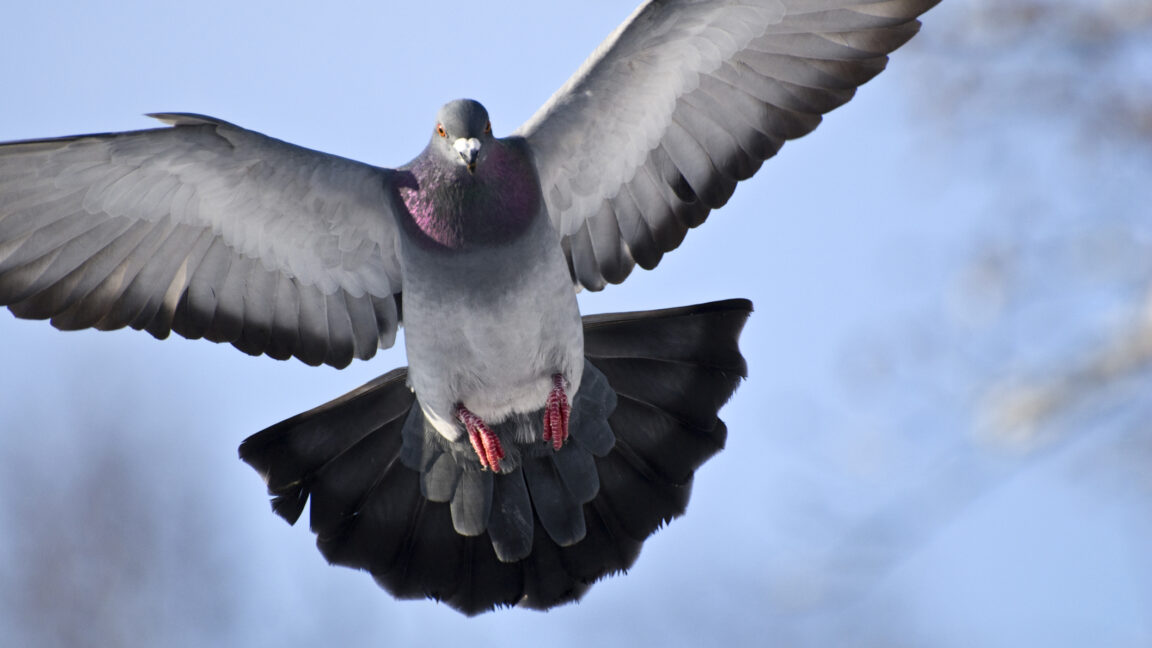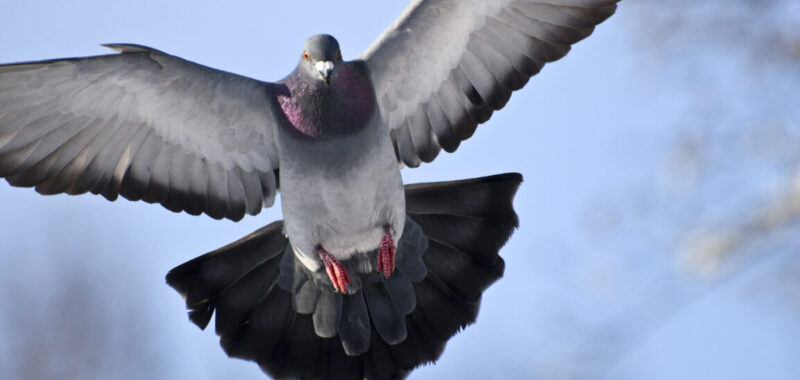
Most airplanes in the world have vertical tails or rudders to prevent Dutch roll instabilities, a combination of yawing and sideways motions with rolling that looks a bit like the movements of a skater. Unfortunately, a vertical tail adds weight and generates drag, which reduces fuel efficiency in passenger airliners. It also increases the radar signature, which is something you want to keep as low as possible in a military aircraft.
In the B-2 stealth bomber, one of the very few rudderless airplanes, Dutch roll instabilities are dealt with using drag flaps positioned at the tips of its wings, which can split and open to make one wing generate more drag than the other and thus laterally stabilize the machine. “But it is not really an efficient way to solve this problem,” says David Lentink, an aerospace engineer and a biologist at the University of Groningen, Netherlands. “The efficient way is solving it by generating lift instead of drag. This is something birds do.”
Lentink led the study aimed at better understanding birds’ rudderless flight mechanics.
Automatic airplanes
Birds flight involves near-constant turbulence—“When they fly around buildings, near trees, near rocks, near cliffs,” Lentink says. The leading hypothesis on how they manage this in a seemingly graceful, effortless manner was suggested by a German scientist named Franz Groebbels. He argued that birds’ ability relied on their reflexes. When he held a bird in his hands, he noticed that its tail would flip down when the bird was pitched up and down, and when the bird was moved left and right, its wings also responded to movement by extending left and right asymmetrically. “Another reason to think reflexes matter is comparing this to our own human locomotion—when we stumble, it is a reflex that saves us from falling,” Lentink claims.
Groebbels’ intuition about birds’ reflexes being responsible for flight stabilization was later backed by neuroscience. The movements of birds’ wings and muscles were recorded and found to be proportional to the extent that the bird was pitched or rolled. The hypothesis, however, was extremely difficult to test with a flying bird—all the experiments aimed at confirming it have been done on birds that were held in place. Another challenge was determining if those wing and tail movements were reflexive or voluntary.

